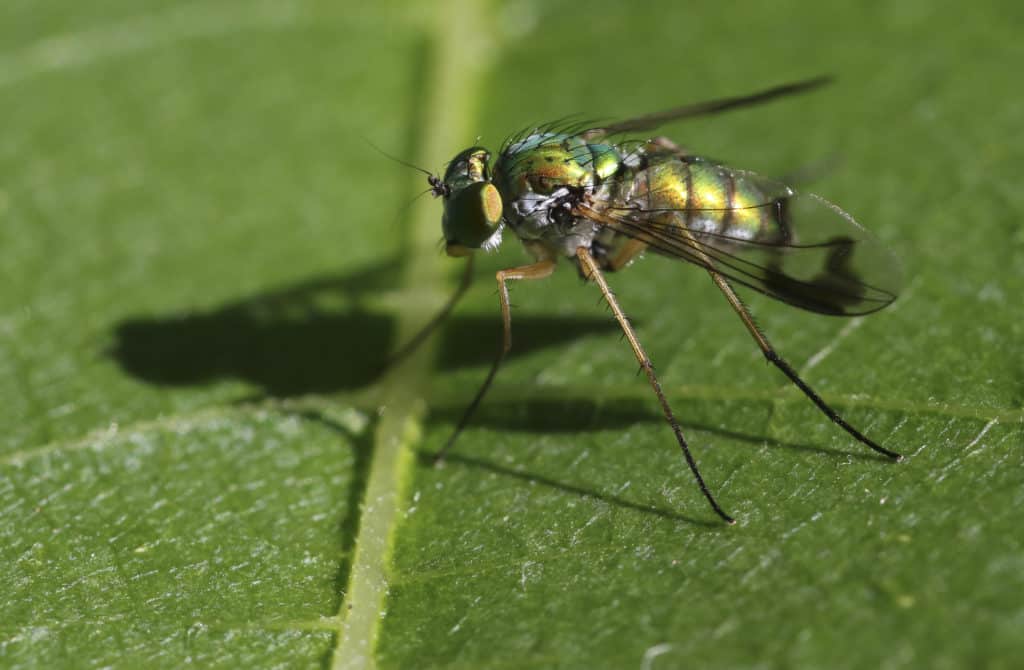Creature Feature

A Gardener’s Dazzling Friend
By Wayne Bierbaum
Over the past five and a half months, my usual weekly patterns have been disrupted. My day job is having me work longer. In the recent past, before COVID-19, I would take a small trip to a local park or wilderness area and do some hiking and photography. Because of time constraints, the trips are shorter and closer to home. Most of my photography has been in my own yard. I take an early morning walk with a macro lens and take photos of the plants, flowers and bugs. I use a larger lens for birds like hawks, goldfinches and hummingbirds.
While searching for bugs, I found a group of sparkling green colored flies. They darted from one leaf to another. Sometimes, for a couple of seconds, they tumbled around fighting. They were quite small, about 8mm, and had very long legs.
They are appropriately named long-legged flies and are a helpful insect. The adults eat smaller bugs like aphids and spider mites. The early forms of the insects, called maggots, live near or in the ground. They eat other types of bugs like worms and caterpillars.
Long-legged flies are true flies and are very territorial although their territory may be only one leaf. They will stand tall and fight intruders, sometimes in a long-legged rolling fight.
There about 7,000 species of the long-legged fly, but all are tiny. The species in Maryland are very common. I find them on plants that are infected with aphids. Recently, my patch of milkweed has been loaded with aphids and these flies were on each plant.
We should be careful when trying to eliminate destructive insects. Spraying for pests will also kill the helpful insects such as ladybugs, praying mantis and long-legged flies.
